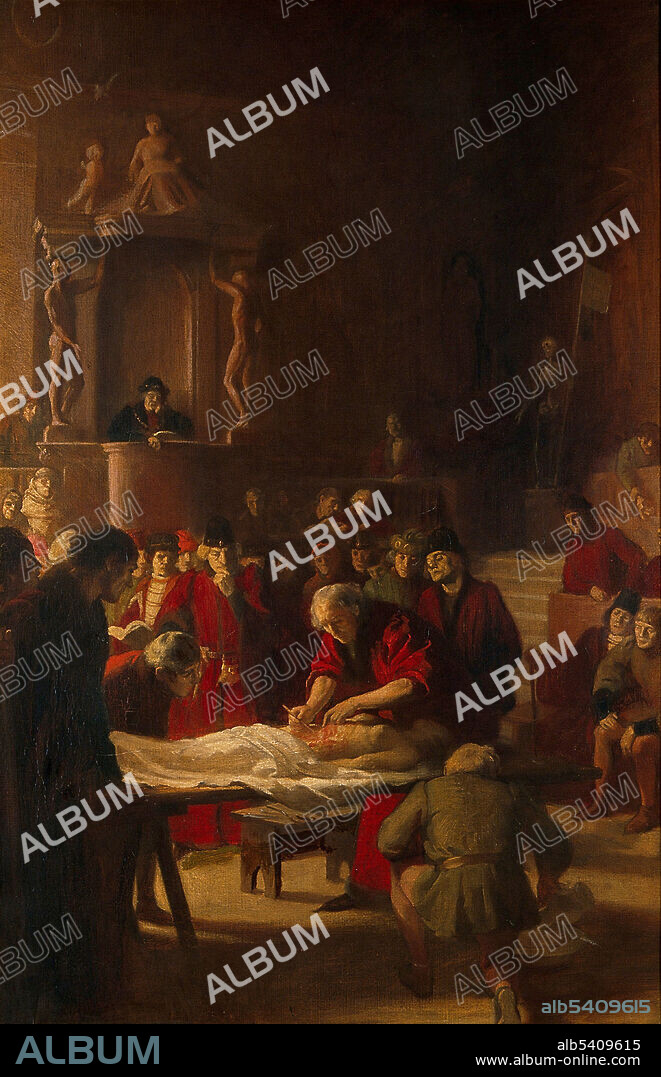alb5409615
Mondino de Luzzi, Italian Anatomist and Surgeon

|
Añadir a otro lightbox |
|
Añadir a otro lightbox |



¿Ya tienes cuenta? Iniciar sesión
¿No tienes cuenta? Regístrate
Compra esta imagen.
Selecciona el uso:

Título:
Mondino de Luzzi, Italian Anatomist and Surgeon
Descripción:
Ver traducción automática
Mondino de Luzzi, the Italian anatomist, making his first dissection in the anatomy theatre at Bologna, 1318. Mondino de Luzzi (1270 - 1326) was an Italian physician, anatomist, and professor of surgery. He was the first to incorporate a systematic study of anatomy and dissection into a medical curriculum. He performed his first public dissection in Bologna in January 1315 in the presence of medical students and other spectators. The proceedings were formally sanctioned by the Vatican, and the subject was mostly likely a female executed criminal. Mondino's teaching methods were unique because he often performed dissections in person and served the role of demonstrator himself, carefully studying the cadaver and incorporating this personal experience into his text and teaching. His major work, Anathomia corporis humani, written in 1316, is considered the first example of a modern dissection manual, the first true anatomical text and remained the most widely used anatomical text for 250 years. He died in 1326 at the age of 55 or 56. Oil painting by Ernest Board, undated.
Crédito:
Album / Science Source / Wellcome Images
Autorizaciones:
Modelo: No - Propiedad: No
¿Preguntas relacionadas con los derechos?
¿Preguntas relacionadas con los derechos?
Tamaño imagen:
3001 x 4650 px | 39.9 MB
Tamaño impresión:
25.4 x 39.4 cm | 10.0 x 15.5 in (300 dpi)
 Pinterest
Pinterest Twitter
Twitter Facebook
Facebook Copiar enlace
Copiar enlace Email
Email
